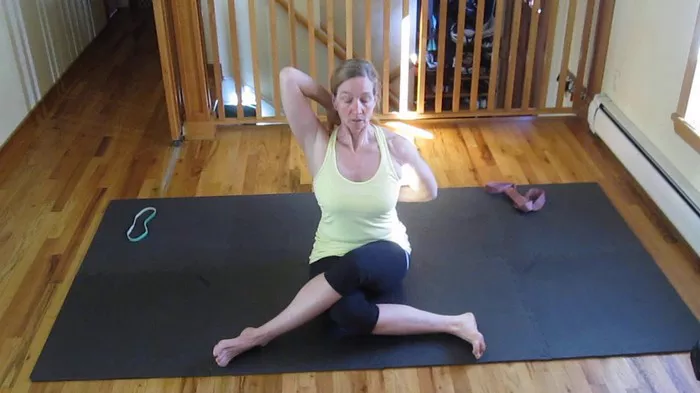In recent years, yoga has gained increasing popularity as a holistic practice for improving overall physical and mental well-being. People turn to yoga for various reasons, including stress relief, increased flexibility, and strength. But one of the most significant benefits of yoga, often underappreciated, is its potential to improve heart health. As heart disease continues to be one of the leading causes of death worldwide, finding natural and effective ways to maintain cardiovascular health has become more important than ever. This article explores the connection between yoga and heart health, examining the physical and psychological effects of yoga and how they contribute to cardiovascular wellness.
Understanding Heart Health
The heart is a vital organ that functions as the body’s circulatory pump, delivering oxygen-rich blood to tissues and removing waste products. To maintain heart health, the cardiovascular system must function smoothly. This involves not just the heart itself but also blood vessels, such as arteries and veins, which carry blood throughout the body. Factors such as high blood pressure, high cholesterol levels, poor circulation, and inflammation can lead to cardiovascular diseases, including heart attacks, strokes, and coronary artery disease.
Several risk factors can negatively impact heart health, including poor diet, lack of exercise, high stress, smoking, and excessive alcohol consumption. A sedentary lifestyle, in particular, has been linked to an increased risk of heart disease, making physical activity a key component of heart health.
The Role of Yoga in Promoting Heart Health
Yoga, a discipline that originated in ancient India, combines physical postures (asanas), breathing techniques (pranayama), and meditation to promote physical, mental, and emotional well-being. Regular yoga practice offers a multitude of benefits that are directly and indirectly related to cardiovascular health.
1. Improving Circulation and Lowering Blood Pressure
One of the primary ways yoga supports heart health is by improving circulation and lowering blood pressure. Yoga postures that focus on stretching, strengthening, and balancing the body promote better blood flow and can help maintain healthy blood pressure levels. In particular, certain poses, such as forward bends, twists, and inversions, stimulate the cardiovascular system by enhancing venous return and improving the overall efficiency of the heart.
A study published in the Journal of Human Hypertension found that participants who practiced yoga regularly experienced significant reductions in both systolic and diastolic blood pressure. Another study published in The American Journal of Cardiology reported that yoga practitioners had lower blood pressure compared to non-practitioners, even after adjusting for other lifestyle factors.
Yoga’s ability to help manage blood pressure is partly due to its emphasis on deep, mindful breathing. Controlled breathing techniques, known as pranayama, help stimulate the parasympathetic nervous system, which is responsible for the body’s “rest and digest” response. This process can help lower heart rate and promote relaxation, reducing the overall stress on the cardiovascular system.
2. Reducing Stress and Anxiety
Chronic stress is a significant contributor to heart disease. Prolonged stress can lead to increased blood pressure, elevated heart rate, and the release of stress hormones like cortisol and adrenaline, all of which can damage the cardiovascular system over time. Yoga provides an effective way to manage and reduce stress. Through regular practice, individuals can activate the body’s relaxation response, which counteracts the effects of stress.
Breathing exercises (pranayama) and mindfulness techniques in yoga help practitioners manage the physical and emotional effects of stress. Deep breathing, such as alternate nostril breathing (Nadi Shodhana), activates the vagus nerve, which helps lower stress levels and promote a sense of calm. Yoga also encourages the development of mindfulness, which teaches individuals to be aware of their thoughts and emotions without becoming overwhelmed by them. This practice of mindfulness helps reduce anxiety and fosters a more balanced, less stressful approach to life.
A 2013 study published in The European Journal of Preventive Cardiology examined the impact of yoga on stress and found that participants who practiced yoga regularly experienced significant reductions in anxiety and perceived stress. This decrease in stress was linked to a reduction in the risk of developing heart disease, as stress is known to contribute to various cardiovascular conditions, including high blood pressure and plaque buildup in the arteries.
3. Enhancing Flexibility and Strength
Yoga’s physical postures (asanas) help improve flexibility, strength, and overall physical fitness. As individuals progress in their yoga practice, they develop better muscle tone, joint mobility, and balance. This not only contributes to improved posture and alignment but also supports heart health by reducing strain on the cardiovascular system.
Certain yoga poses, such as the Warrior series (Virabhadrasana), Cobra pose (Bhujangasana), and Downward Dog (Adho Mukha Svanasana), help strengthen the muscles of the chest, core, and legs, which enhances blood circulation and supports efficient heart function. By building strength and flexibility, yoga practitioners are better able to perform other forms of exercise, such as walking, swimming, or cycling, which are all excellent for cardiovascular health.
Additionally, yoga can improve overall energy levels and stamina, making it easier for individuals to engage in regular physical activity, which is essential for maintaining a healthy heart.
4. Weight Management and Metabolic Health
Maintaining a healthy weight is one of the most important factors in reducing the risk of heart disease. Excess body fat, particularly abdominal fat, has been linked to an increased risk of cardiovascular conditions such as high blood pressure, diabetes, and high cholesterol. Yoga can be an effective tool for weight management, particularly when combined with mindful eating practices and lifestyle changes.
While yoga may not burn as many calories as high-intensity forms of exercise, such as running or aerobics, it can still contribute to weight loss by promoting mindfulness and reducing emotional eating. Practices like meditation and breathing exercises help individuals become more aware of their eating habits and the emotional triggers that may lead to overeating. Moreover, yoga’s emphasis on balance and body awareness encourages practitioners to adopt healthier habits and make more conscious decisions regarding nutrition and lifestyle choices.
A study published in Obesity Reviews found that individuals who practiced yoga showed improvements in weight, body mass index (BMI), and waist circumference. Yoga’s ability to reduce stress and increase mindfulness likely plays a role in these positive outcomes, as emotional eating and stress-induced cravings are common contributors to weight gain.
5. Improving Cholesterol Levels
High levels of LDL cholesterol (often referred to as “bad” cholesterol) and low levels of HDL cholesterol (the “good” cholesterol) are major risk factors for heart disease. While exercise, diet, and medication play significant roles in managing cholesterol levels, yoga can also contribute to better cholesterol management.
Yoga can have a positive effect on lipid profiles, as studies have shown that regular yoga practice can lead to reductions in total cholesterol, LDL cholesterol, and triglyceride levels. Additionally, yoga may help increase HDL cholesterol, which helps remove excess cholesterol from the bloodstream.
A 2017 study published in The Journal of Alternative and Complementary Medicine examined the impact of yoga on cholesterol levels and found that participants who practiced yoga had a significant improvement in their lipid profiles, including a decrease in total cholesterol and triglycerides.
Types of Yoga Beneficial for Heart Health
Not all forms of yoga are equally effective for improving heart health, so it is important to choose a style that aligns with your cardiovascular goals. The following types of yoga are particularly beneficial for heart health:
Hatha Yoga: A gentle form of yoga that focuses on basic postures and breathing techniques. It is accessible to beginners and can help improve flexibility, strength, and circulation.
Vinyasa Yoga: A more dynamic form of yoga that links movement with breath. The continuous flow of postures helps improve cardiovascular fitness and endurance.
Restorative Yoga: A calming and therapeutic practice that focuses on relaxation and stress relief. It is ideal for individuals looking to reduce stress and improve heart health in a gentle, low-intensity manner.
Kundalini Yoga: Combines physical postures, breathing exercises, and chanting to activate energy within the body. This practice is effective for stress reduction, emotional balance, and overall heart health.
Iyengar Yoga: Focuses on alignment and precise movements, making it ideal for those who want to improve posture and circulation while reducing stress.
Conclusion
Yoga offers a wide range of benefits that contribute to improved heart health. By enhancing circulation, reducing stress, strengthening muscles, promoting flexibility, and supporting weight management, yoga can help reduce the risk of heart disease and improve overall cardiovascular function. Incorporating yoga into your daily routine, along with other healthy lifestyle habits such as a balanced diet and regular physical activity, can go a long way in maintaining heart health and preventing heart disease. Whether you are a seasoned practitioner or a beginner, the heart-healthy benefits of yoga are undeniable, making it a valuable tool in the pursuit of a long and healthy life.
Related Topics:
























